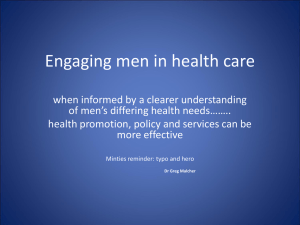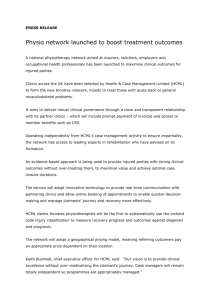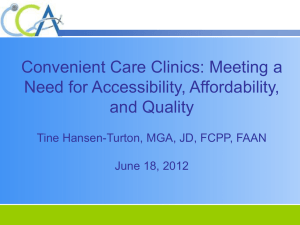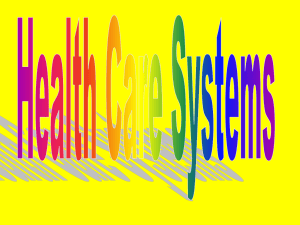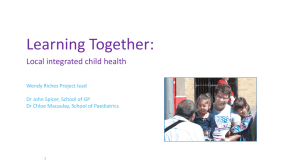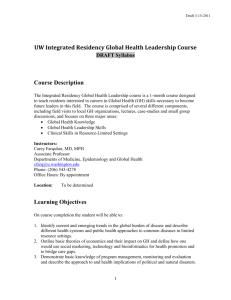Emergency Preparedness - National Center for Health in Public
advertisement
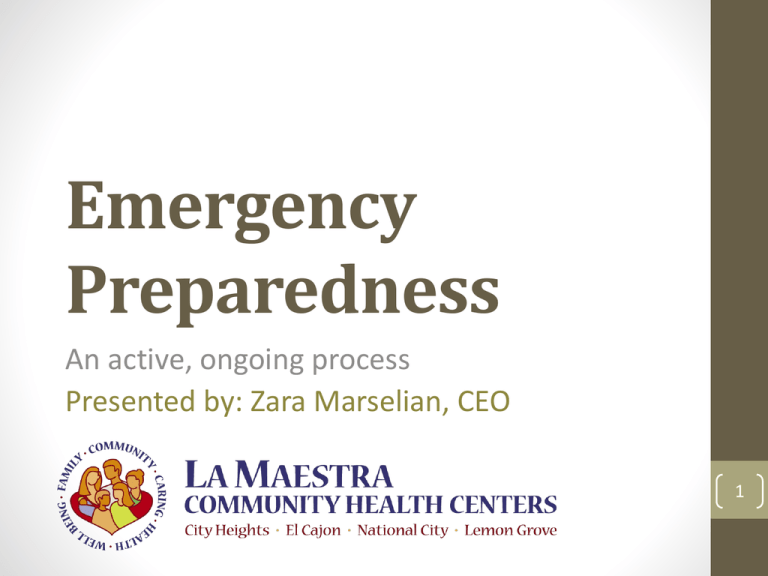
Emergency Preparedness An active, ongoing process Presented by: Zara Marselian, CEO 1 2011 Blackout & California Wildfires of 2003 and 2007 Taught us to distinguish between “passive” and “active” disaster preparedness measures. 2 Passive vs. Active • • • • • Passive Preparing safety manuals Stockpiling goods (flashlights, radios, water, etc.) Developing computer lists of personnel OSHA safety training Employee safety code drills • • • • Active Developing comprehensive response plans Monitoring hazard threats Training emergency personnel Training members of the community at risk 3 3 Messages 1 ) Who do we rely on during an emergency or disaster? 2) What is the power of communication? 3) What did we learn from these experiences? 4 Clinics must be prepared to be self-sufficient One of the most fundamental components of planning efforts is the provision of generators and fuel in the event of a power outage. 5 Clinics are the communities’ life support system in times of crisis. If a power outage occurs, clinics vital power is needed to resume operations. This is where the importance of generators comes in. It is important that clinics have generator backup, because as we learned, power outages are often unexpected and unpredictable. The safety of those in immediate need of healthcare is a priority, and generators can ensure that those in need will be taken care of with little to no interruption. 6 The power of communication Develop effective internal and external communications plans Clinics should establish an alternative communication system if standard communications fail. Use a combination of communication tools: • Basic telephone systems • Overhead announcement and paging systems • 2 way radios • Cell phones • Text messaging • E-mail • Intranet message posting • Emergency handheld programmed radios • Ham radio systems 7 What did we learn from these experiences? Because disaster events are relatively rare, staff does not have regular experience with emergency procedures, therefore… - Regular staff training is crucial to effective response to a disaster surge. - Clinics should provide emergency training during staff orientation to ensure a baseline knowledge among all staff. - On-going staff participation is crucial during emergency exercises because they are given the ability to respond during a crisis 8 La Maestra's security personnel play a large role in emergency planning due to the fact that they are frequently on site when an emergency occurs This placement provides security staff with a unique ability to take immediate actions that can save lives before emergency units can arrive. 9 Security Personnel: - equipped with 2 way radio communication at all times - work with the maintenance team and are cross-trained in security codes for proficiency - are familiar with emergency contact lists throughout the organization, connecting to satellite sites immediately 10 Health Centers are diverse organizations La Maestra’s Emergency Management approach has to consider: • The center’s size (3 floors with underground parking garage) • Location (Satellite clinics located throughout San Diego County) • The Community (Culturally diverse community with 20+ languages) • Patient Demographic (patients with mental/behavioral illnesses, anxiety, depression, PTSD) • Patients with chronic disease 11 Community Engagement • Understand your community • Develop ongoing collaborative relationships • Integrate the community into your • preparedness • activities 12 Engagement benefits everyone • Overall community health & safety is improved • Burden on emergency responders is reduced • Patients are better able to care for themselves and avoid putting others at risk 13 Emergency Preparedness Partners 14 Local Partners 15 Emergency Contacts Gary S. Rotto Director of Health Policy and Strategic Communications Council of Community Clinics 619-542-4334 (direct) 858-405-5048 (mobile) grotto@ccc-sd.org Patrick Klein Associate Director of Health Center Operations California Primary Care Association Phone: (916) 440-8170 x1111 pklein@cpca.org American Red Cross 858-309-1200 Disaster Hotline San Diego 858-565-3490 Fire Department 858-974-9891 San Diego Gas & Electric 1-800-611-7343 The City of San Diego – Public Utilities Water Operations (619) 515-3525 16





